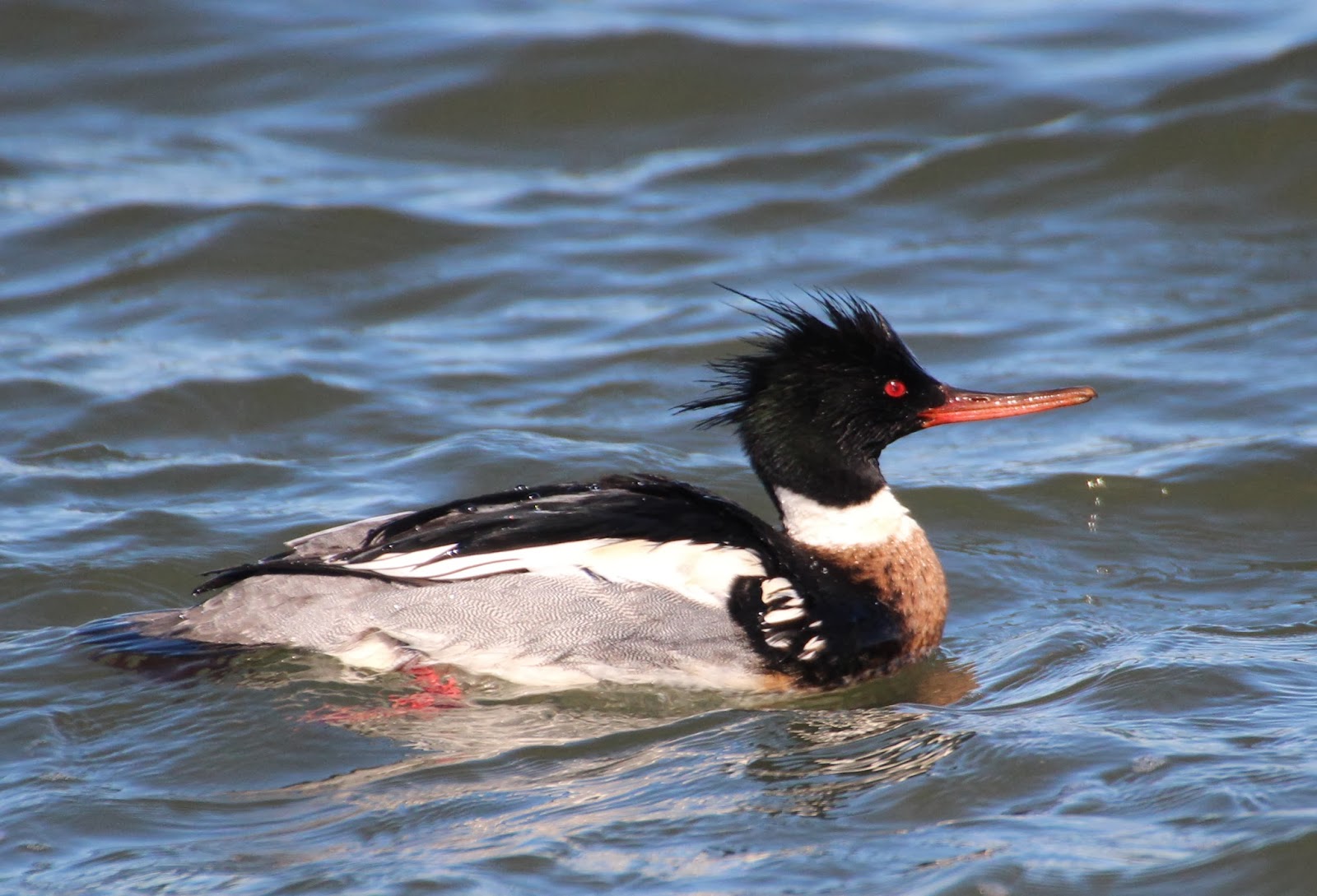Waterfowl
Ducks are challenging birds to get photographs of flying. They do not leave the water very much and when they do, it is usually for a brief, fast moment. These are some pictures of various species of ducks in flight.
All of the above are pictures of Bufflehead flying. These pictures were taken along the Delaware River. They are such small ducks that when I first saw the large group in the top picture, I couldn't figure out what they were.
This is a picture taken at Greene Lane Reservoir of two Northern Pintail (Female left; Male right). These were two ducks of a large group that were keeping their distance from me.
This is a Long-tailed Duck taken at Barnegat Lighthouse. There were so many there but it was hard to get this shot because they were mostly staying in the water.
This is a Brant taken at Barnegat Inlet. As you can see it is carrying a piece of seaweed in its mouth. Luckily, this bird flew from far away, to right in front of me.
This is a mixed flock of Black and Surf Scoters (Surf Scoters front; Black Scoters Back). These were my lifer Surf Scoters right outside the back porch of my beach house in Avalon NJ.
This shows how massive some flocks of Snow Geese are. Taken at Featherbead Lane in Salem Township NJ. They were scared by some raptor and/or gunshots.
This is a close-up of Snow Geese also at Featherbead Lane in Salem Township NJ.
Raptors
Raptors are a much easier species of bird to get a picture of in flight because you mostly only see them in the air. Also, some soar slowly, but it can also be very difficult, because some are very fast and make sharp turns through the woods. These are some pictures of different species of raptors in flight.
This is a picture of a resident Red-shouldered Hawk taken in my backyard. It stayed in my backyard for about two weeks continuously but it has been coming on and off for about a year and a half.
This is a picture of a Red-tailed Hawk taken at the Churchville Nature Center. Sadly it was in poor lighting, however we did get some very good looks.
This Peregrine Falcon at Heislerville NJ spread its wings for about three minutes before finally taking off. This bird allowed me to get incredibly close to him because he was too busy eating a Dunlin that he stole from a Merlin.
This is the same bird as above just after taking off.
This is the same bird as above later on in its flight.
This is another species of Falcon, an American Kestrel (Male top; Female perched below). This picture was taken in Philadelphia. I got very lucky here because originally I saw the lone male on a telephone pole further down the road. In about two minutes, he took off and landed on a street light right in front of me. Later the female showed up.
These are both pictures of a Rough-legged Hawk at Peace Valley Nature Center. This was a life bird that gave us some great views. it was only in one area flying back and forth between trees that were at most only twenty feet away.
This Osprey was at Avalon NJ hovering above the ocean looking for fish below the surface of the water.
This Osprey was at Edwin B. Forsythe NWR with a fish that it had just caught. They hold the fish head first to make them stream-line so that they don't slow them down.
This is an immature Bald Eagle (left) compared to the size of a Turkey Vulture (right) at Cape May, NJ.
This is an immature Bald Eagle at Cape May, NJ.
Gulls, Terns, Skimmers, and Pelicans
These birds, like raptors, are also in flight a lot, however they are fast and do not usually soar around in one area for a long period of time.
This is a Brown Pelican at Chincoteague NWR that flew over the marshes.
This is the same bird as above.
This is a Black Tern that was changing plumages at Chincoteague NWR.
This is a Least Tern at Chincoteague NWR. This bird is an endangered species.
This is an adult Forester's Tern hovering above my head at Edwin B. Forsythe NWR.
This is a Black Skimmer at Fowler's Beach in Delaware.
This is a large flock of Black Skimmers flying around at Fowler's Beach.
This is a Great Black-backed Gull that was flying behind our boat on the way over to Cape May, NJ from Cape Henlopen, DE.
This is a Ring-billed Gull flying along the Delaware River. They are very plentiful there in the winter.














































+beak+open.JPG)





























